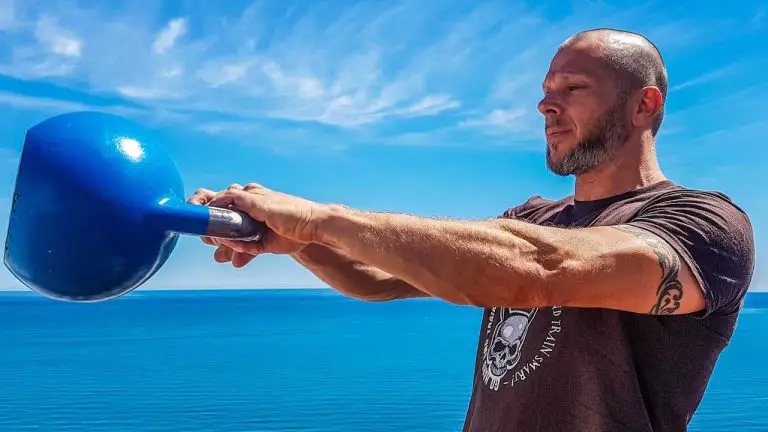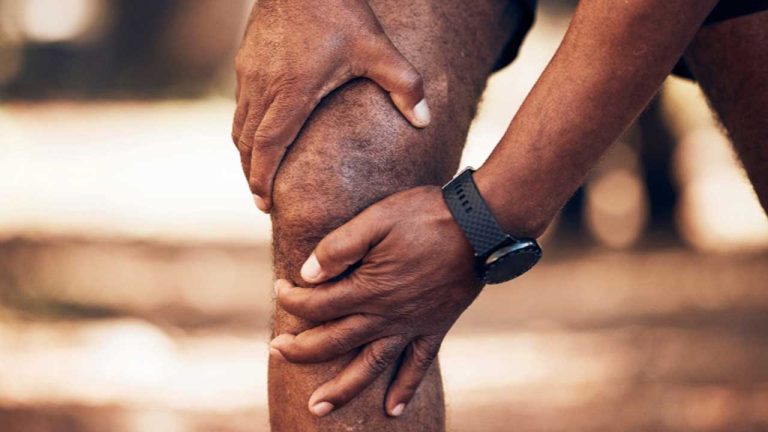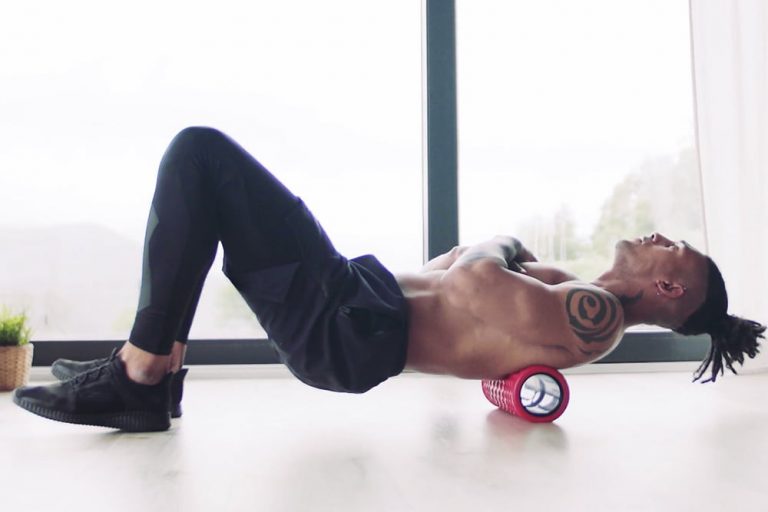How to Prevent Squat Knee Pop and What to Do If It Happens
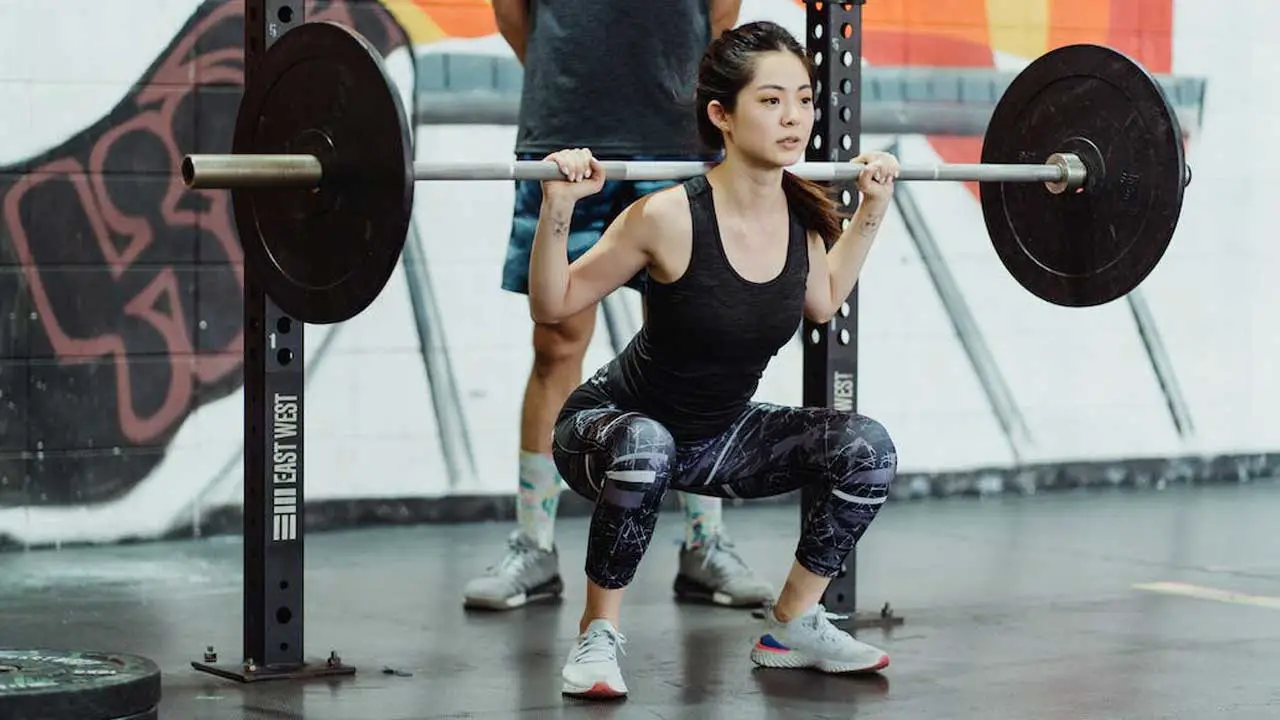
ListedFit is reader-supported. When you buy through links on our site, we may earn a small commission.
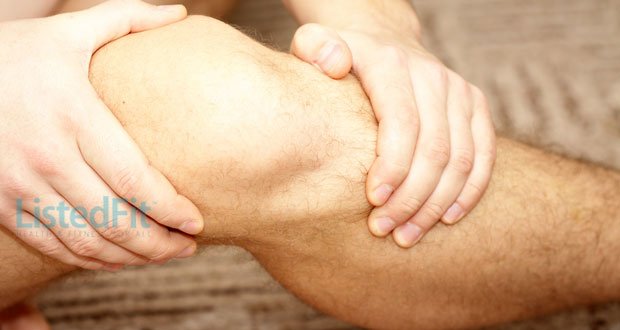
Squat knee pop is a common occurrence among those who frequently squat, particularly during powerlifting exercises. It can be a source of discomfort and can even keep you from reaching your fitness goals.
Fortunately, there are steps you can take to help prevent squat knee pop from happening and what to do if it does.
By understanding the causes and taking preventative measures, you can avoid this issue and continue to make progress towards achieving your fitness goals. This article will explain how to prevent squat knee pop and what to do if it does occur.
Table of Contents
What is Squat Knee Pop?
Squat knee pop occurs when a loud popping sound is heard at the time of the descent into the bottom position of a squat. It is a result of a popping or clicking sound due to the patellar tendon slipping off the underside of the patella.

While squat knee pop isn’t a serious injury, it can be very painful and cause discomfort that may last for weeks or even months. Most often, squat knee pop occurs in the middle of a squat when lowering down into the bottom position.
However, it can also happen coming out of the bottom position and ascending back up out of the squat. Squat knee pop can occur with any type of squat but is most common with back squats, front squats, and overhead squats. Squat knee pop can also occur when doing other lower-body exercises, such as single leg exercises and lunges.
Causes of Squat Knee Pop
Squat knee pop occurs as a result of a misalignment of the knees and ankles. This misalignment can be due to a variety of factors, including –
– Footwear: Wearing the wrong type of footwear can cause misalignment and encourage knee joint pain. Poor footwear can lead to flat feet, high arches, and other foot problems, which can cause misalignment of the knees and ankles.
– Connective tissue: Connective tissues, such as the tendons, ligaments, and joint cartilage, are responsible for holding the knee joint together. If these tissues are loose or inflexible, it may be difficult to squat with good form due to knee joint misalignment. Tight connective tissues can also reduce the ability to squat with proper technique.
– Muscle weakness and tightness: The muscles of the lower body play an important role in squatting correctly and avoiding knee joint misalignment.
If certain muscles are too tight or too weak, they may not be able enough to hold the knee joint in proper alignment.
How to Prevent Squat Knee Pop
Providing there isn’t any underlying condition, there are a few things you can do to lessen squat knee pop in the long term. Good practices that will keep your knees moving smoothly.
Assess your footwear: The type of footwear you wear during exercise can have a significant impact on joint health. When squatting, you want to make sure to wear the right type of footwear to reduce the likelihood of squat knee pop.
For example, wearing shoes that cause you to over pronate, wearing shoes that put your feet and legs in the wrong position to carry the weight such as running shoes, can encourage knee joint misalignment and other foot problems which is why wearing the right footwear is important.

How to Prevent Squat Knee Pop
-
Try Stretching Exercises to Prevent Squat Knee Pop

Stretching exercises can help loosen tight muscles and improve flexibility, which can reduce the risk of knee joint misalignment. Additionally, stretching after exercise can help reduce the likelihood of knee joint pain.
It is recommended that people who frequently squat perform stretching exercises that can help with knee joint misalignment.
Calf stretches: Toe raises and calf stretches are important exercises for those who frequently squat. These exercises help improve the flexibility of the calves and reduce the likelihood of knee joint pain.
Quadriceps stretch: The quadriceps stretch can help improve the flexibility of the quads. This stretch can be performed by standing upright and bending the leg of the quad you want to stretch and holding it at the ankle.
Hamstring stretch: The hamstring stretch can help improve the flexibility of the hamstrings. This stretch can be performed by placing one foot on a bench, box, or chair, and then bending at the hips and knee of the other leg.
-
Do Strengthening Exercises to Prevent Squat Knee Pop

Squatting with good form is important for joint health, but many people also have flexibility issues that may be contributing to knee joint misalignment.
If you frequently squat, make sure you implement some of these exercises to help look after your knees.
Step ups: Step ups are an effective exercise for strengthening the quads, which helps improve the flexibility of the knee joint and reduce the likelihood of knee joint pain.
Squatting with a resistance band: Squatting with a resistance band around the ankles is an effective exercise for strengthening the ankles and foot joints. This exercise helps improve foot joint flexibility, which can reduce the likelihood of knee joint misalignment.
Hamstring curls and stretches: Hamstring curls are an effective exercise for strengthening the hamstrings. The hamstrings do affect the knee flexion and often having weaknesses or lack of flexibility in the hamstrings can cause problems with the movement of the knee.
-
Ensure You Are Wearing the Right Type of Footwear
Some people are lucky enough to be able to squat in inappropriate footwear and have no problem at all, but some of us just aren’t. Chuck Taylors are a good option if you want a recommendation of good shoes for squatting.
-
Squat with Good Form (Film yourself if you have to)

Squatting with good form involves keeping the knees aligned over the toes and the hips aligned over the knees, while bending at the appropriate rate.
You have to be sure that your knees are moving in their normal range of motion without being restricted or causing pain. Your knee pop could be caused by pronation or tightness in certain areas of your body. So studying your form is a major help in fixing knee pop.
Treatments for Squat Knee Pop
If you experience squat knee pop, it is important to take the necessary steps to help reduce the pain and discomfort associated with it.
It is recommended that you take the following steps after experiencing knee joint pain due to squatting:
- Rest: If you have knee pain, it is important to rest from exercise until the pain subsides. It can be difficult to resist the urge to exercise, but continuing to perform exercises while in pain can actually make things worse.
- Ice: Applying ice to the knee joint can help reduce swelling, which may reduce the pain associated with squat knee pop. You can apply ice by placing a bag of frozen vegetables or a frozen water bottle against your knee joint. It is important to use a thick towel between the ice and the knee joint to prevent ice burns.
- Elevate: Elevating the knee joint can help reduce swelling. An easy way to do this is to rest your leg on a stool or pillow while you are seated.
- Use a medical compression sleeve: Applying a compression sleeve to the knee joint can help reduce swelling. A compression sleeve is a very inexpensive and easy-to-use product that can help relieve knee joint pain.
When to See a Doctor for Squat Knee Pop

Squat knee pop is often nothing to worry about and can be treated with a few simple steps and modifications. However, if knee pain becomes really severe or if knee pop accompanies other pain in the lower back, hips, or groin, you should see a doctor.
This could be an indicator of a more serious condition and might require treatment or even surgery. If you feel knee pain that keeps you from squatting or engaging in other activities, make an appointment with a doctor.
Conclusion
Hopefully this article gave you some good tips to help you deal with squat knee pop.
The key thing is to listen to your body and if something doesn’t feel right, pay attention to it. Making sure you look after your knees in the right way will pay dividends in the long run.
Author
- Danny Loeb is a qualified Personal Trainer, Fitness Model and Writer. He enjoys blogging about health and fitness, messing around with Photoshop, and sharing his experiences with everyone.
Latest entries
 NutritionFebruary 6, 2024What Are Fillers in Supplements? – Unveiling Inactive Ingredients
NutritionFebruary 6, 2024What Are Fillers in Supplements? – Unveiling Inactive Ingredients FitnessAugust 23, 2023Best Post-Workout Foods: Great Ideas for Recovery and Results
FitnessAugust 23, 2023Best Post-Workout Foods: Great Ideas for Recovery and Results BulkingJuly 26, 2023Is Rice Good for Bulking? Unveiling the Truth
BulkingJuly 26, 2023Is Rice Good for Bulking? Unveiling the Truth CultureJuly 15, 2023Why Do People Hate Planet Fitness? Read This Before You Join!
CultureJuly 15, 2023Why Do People Hate Planet Fitness? Read This Before You Join!
Affiliates:
This post may contain affiliate links that at no additional cost to you, the site may earn a small commission. We only recommend products we would use ourselves and all opinions expressed on this site are our own.
General Advice:
The information provided in this article is for general informational purposes only. It is not intended as a substitute for professional advice. Always consult with a qualified healthcare professional before starting any new diet, exercise program, or making changes to your health routine.
Accuracy Advice:
While we strive to provide up-to-date and accurate information, the content in this article may not reflect the most current research or medical guidelines. We encourage readers to do further research and consult with professionals for more personalized advice.
Our Recommendations:
The products and services mentioned in any of our articles are recommended based on our independent research and personal experience. We are not sponsored by any company. We aim to suggest products and services we believe are of high quality and could be beneficial to our readers.


